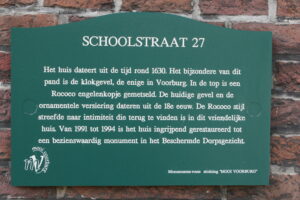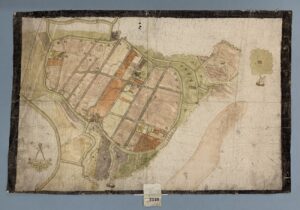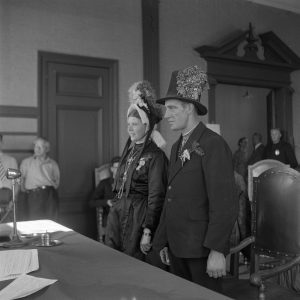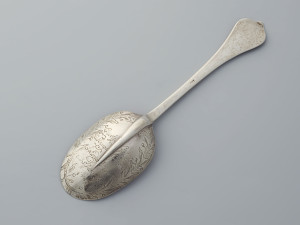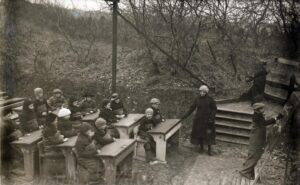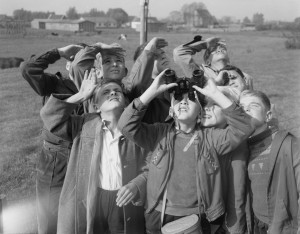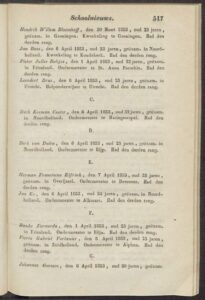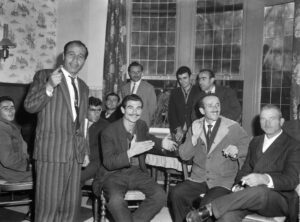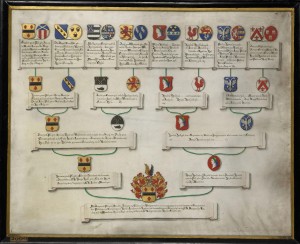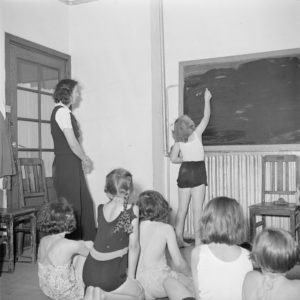Did you know you can use the Google Translate app on your phone to translate publications? Just click the camera icon in the app and point it at a printed text. Google Translate will show the translation in place. I first saw this when one of my clients used it to translate a Dutch plaque next to a monument and a Dutch menu. You can also use it to translate Dutch books, newspapers, or magazines. As long as the text is printed, Google Translate should be able to handle it. … [Read more...]
Dutch Genealogy News for July 2020
Here is an overview of the new sources, websites, and projects that were announced last month. Sources Breda and the former municipalities now belonging to Breda have been added to HisGis, the historical geographic information system. The map viewer shows the plots and ownership in Breda in 1832. 1200 maps of Drenthe from the 1600s to 1900s can now be consulted at the Drents Archief website. The Brabants Historisch Informatie Centrum added scans of the aldermen's court records of … [Read more...]
Dutch term – Nedersaksisch
Nedersaksisch is the Dutch word for Low Saxon, a language spoken in the north-east of the Netherlands and across the eastern border in Germany. It has different dialects, including Gronings (in Groningen), Drents (in Drenthe), Twents (east of Overijssel), and Achterhoeks (east of Gelderland). In 1998 it was recognized as an official regional language of the Netherlands, alongside Frisian and Limburgs. Most people who speak Nedersaksisch also speak standard Dutch, though sometimes with an … [Read more...]
Quick tip – Friesland Memorabilia
If you have ancestors from Friesland, you want to check out the website of Hessel de Walle: Memorabilia uit Friesland [Memorabilia from Friesland]. Hessel collects references to Frisian memorabilia with people's names on them, like mourning boards in churches, inscribed silverware, grave monuments, etc., and generously made his database available online. You can search the database in different ways: Gemeente - Municipality Plaats - Town Typen - Types Achternaam - Last name … [Read more...]
Dutch term – Pandemie
A pandemie is a pandemic. The 1918 Spanish flu pandemic hit the Netherlands pretty hard. About 38,000 people died. The province of Drenthe had the most cases. Here is an image of children going to school outdoors, in the dead of winter in 1918. … [Read more...]
5 Ways to Assess Online Trees and Other Publications
Many of my research projects start with a survey of published literature: journals, books, and online trees. Here are five ways I assess the quality and reliability of these publications. Sources The first thing I look for are the sources: If the publication has no sources, there is no way to evaluate the quality of the underlying research. If the publication only lists other trees or published genealogies as sources, that implies the compiler did not do original research. If the … [Read more...]
Quick tip – Magazines and Journals at Delpher
The website Delpher is famous for its newspapers, but also has a large collection of magazines and journals. This includes many trade and professional journals that have information about people in these occupations, such as teachers and farmers. The majority of the periodicals dates from the 1850s to 1950s. … [Read more...]
Quick tip – 98% of Dutch People have Immigrant Ancestors
Did you know that an estimated 98% of people in the Netherlands have an immigrant ancestor somewhere in their trees in the past 500 years? They could be descendants of German laborers, French Huguenots, Swiss or Scottish mercenary soldiers, people from former Dutch colonies like Suriname, the Dutch East Indies (now Indonesia), or the Netherlands Antilles, or more recent immigrants like guest workers from Morocco or Turkey, or refugees from Iraq or Syria. … [Read more...]
Dutch term – Mannelijke en Vrouwelijke Lijn
In Dutch, the mannelijke lijn is the male line, and the vrouwelijke lijn is the female line. Traditionally, many Dutch publications have focused on the male line only. Over the past few decades, it has become common to focus on both male and female lines, both in terms of descendants and ancestors. Most Dutch genealogists I know are researching their kwartierstaat, their ancestors in all the lines. People interested in the female line can join Mamamito, a Belgian research project that … [Read more...]
Dutch Genealogical Abbreviations
Here is a list of abbreviations you may come across during your research in the Netherlands. Abbreviation Full version English translation A.R.A. algemeen rijksarchief national archives (outdated term) aktenr. aktenummer record number B.R. Bevolkingsregister Population register B.S. burgerlijke stand civil registration B.S. Binnenlandse Strijdkrachten Domestic Armed Forces (resistance organization in World War … [Read more...]
